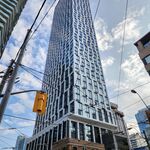With thanks to a US immigration lawyer's web site
Withdrawal of Application for Admission
Foreign nationals who apply for admission and are told that they are inadmissible to the U.S. are eligible to request permission to withdraw his/her application for admission. CBP officials have several choices when an individual applies for admission to the U.S. and is deemed inadmissible at the port of entry.
In certain cases, CBP has the authority to issue an individual an order of expedited removal. In other cases, CBP can refer individuals for removal proceedings before an Immigration Judge for a determination of admissibility. CBP officers also have the discretion to grant such individuals permission to withdraw his/her application for admission, avoiding removal proceedings altogether. Foreign nationals who are also deemed to be “arriving aliens” who are placed into removal proceedings may also request permission to withdraw his/her application for admission from the Immigration Judge.
Withdrawal at the Port of Entry
Under INA § 235(a)(4):
An alien applying for admission may, in the discretion of the Department of Homeland Security and at any time, be permitted to withdraw the application for admission and depart immediately from the United States.
Permission to withdraw the application for admission is available at deferred inspection as well as at the initial inspection. It is important to remember that permission to withdraw the application for admission is a privilege and not a right. At the port of entry, the decision whether to permit withdrawal is solely within the discretion of the CBP officers.
CBP officers are instructed to consider several factors when determining whether or not to grant an individual permission to withdraw his/her application for admission:
Seriousness of the immigration violation;
Previous findings of inadmissibility against the applicant;
Intent of the person to violate the law;
Ability to overcome the ground of inadmissibility;
Age or poor health of applicant;
Other humanitarian or public interest considerations.
The CBP Inspector’s Field Manual (“IFM”) instructs CBP officers to consider whether it is in the best interest of justice that a removal order not be issued. IFM Chapter 17.2; 8 C.F.R. § 235.4. Likewise, the officer must consider whether justice would be ill-served if an order of removal were issued. IFM Chapter 17.2. In light of the serious consequences of an expedited removal order (5-year bar to admission), CBP officers are instructed to carefully consider and balance all relevant factors in each case before making the decision to grant permission to withdraw or issue an order of expedited removal.
The officer must be sure that the foreign national has both the means and intent to depart the U.S. immediately before granting permission to withdraw the application for admission. Upon granting permission to withdraw, the CBP officer should also advise the foreign national of what he/she may do to overcome the grounds of inadmissibility. For example, a Canadian citizen who seeks to enter the U.S. on occasional visits for pleasure, but who also has a conviction for a crime involving moral turpitude (“CIMT”), should be informed about Form I-192, Application for Advance Permission to Enter the U.S. as a Nonimmigrant. In other cases, CBP officers may suspect that an applicant for admission may be entering the U.S. with the intent to remain permanently despite his/her stated intent to enter temporarily. In these cases, CBP officers may grant permission to withdraw and instruct the individual that he/she can re-apply for admission with evidence of his/her strong ties to a foreign country (i.e., proof of residence abroad; ownership of property in native country; family ties in native country; employment abroad; etc.).
Procedure
Once CBP makes the decision to permit withdrawal, an officer must prepare a Form I-275, Withdrawal of Application for Admission/Consular Notification. The form must clearly state the reasons for inadmissibility. A sworn statement of the applicant should also be taken and attached to Form I-275. The sworn statement is taken on Form I-877 and a copy should be provided to the individual together with Form I-275.
Removal Proceedings
Permission to withdraw the application for admission may also be granted by an Immigration Judge to an “arriving alien” in removal proceedings. Once the issue of inadmissibility has been resolved, permission to withdraw should ordinarily be granted only with the concurrence of the DHS. 8 C.F.R. § 1240.1(d). An Immigration Judge cannot grant permission to withdraw unless the Judge is satisfied (1) that the individual possesses both the means and intent to depart immediately; and (2) that the individual has established that factors directly relating to the issue of inadmissibility indicate that granting withdrawal would be in the interest of justice. 8 C.F.R. § 1240.1(d).
Withdrawal of Application for Admission and Voluntary Relinquishing Permanent Residence
Permission to withdraw the application for admission will often be offered and/or requested in cases involving a lawful permanent resident of the U.S. who has been charged with abandoning his/her permanent resident status.
A typical scenario involves a foreign national who obtains permanent residence in the U.S. at a point in time that it is not convenient for that individual to immigrate to the U.S. The individual makes a formal entry into the U.S. with an immigrant visa, obtains his/her green card, and then departs the U.S. to return to his/her residence abroad. For one reason or another, the permanent resident does not make plans to live permanently in the U.S. for many years. When the individual finally makes plans to immigrate and take up permanent residence in the U.S., he/she is charged by CBP officials with abandoning his/her permanent residence in the U.S. at the port of entry.
It is the position of the DHS that an individual abandons his/her permanent residence if he/she has remained outside of the U.S. for a period of one year or more. When an individual remains outside of the U.S. for more than one year and then applies for admission to the U.S. as a lawful permanent resident, CBP officials will charge the applicant for admission as inadmissible under INA § 212(a)(7)(A)(i)(I). The individual will usually be given the option to voluntarily relinquish his/her permanent resident status by executing Form I-407, in which case he/she will be granted permission to withdraw his/her application for admission. If the applicant for admission would like a chance to prove that he/she did not abandon residence, then CBP will issue a Notice to Appear for removal proceedings before an Immigration Judge. The Immigration Judge has sole authority to hold that permanent residence has been abandoned and is the only one who can take permanent resident status away. Many individuals will believe that they have a good case in support of maintaining permanent residence and will ask for their day in court to prove it. In many cases, however, the individual will learn that under the applicable law, they have little to no chance of successfully defending their permanent resident status. In these cases, the individual must still appear before the Immigration Judge but can acknowledge that he/she has abandoned his/her permanent residence and request permission to withdraw the application for admission.
A grant of permission to withdraw the application for admission is not an order of removal. The individual does not face a bar to returning to the U.S. and does not require permission to reapply for admission to the U.S.






